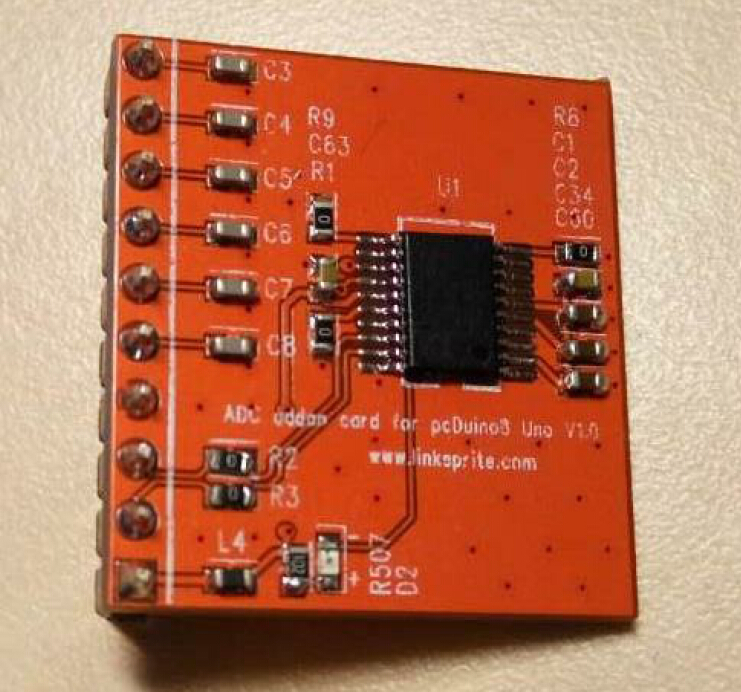#include <core.h>void setup() {//Initialize serial with baudrate setting, the default config is SERIAL_8N1 int rate = 115200; Serial.begin(rate); //you will see the string on the terminal Serial.println("Serial begin: ");}void loop() { //if you type the character in the terminal, available() will return the size you typed if (Serial.available() > 0) { // read the incoming byte: char thisByte = Serial.read(); //print it on the terminal with DEC format Serial.print("I received: "); Serial.println(thisByte, DEC); } delay(200);}
ADC
Arduino functions
analogReference()
andalogRead()
Because pcDuino8 Uno has no on-chip ADC module, so if you want to use analogRead() you should mount an external ADC module(as shown in the following image) on J10 to read analog signal.

This ADC module has ADI AD7997 12-bit ADC chip, and 6 ADC channels are available. Users can access these ADC port on J7, please check the details from the image below.

Notes:
- If you want to measure the high voltage, you can purchase the bridge board for pcDuino, it can measure max 5V input.
Connect
Please take the picture to mount the ADC module to pcDuno8 Uno.
![]()
Setup
Connect the battery’s N to any GND and P to the ADC0.
/*
* ADC test program
*/
#include <core.h>
int adc_id = 0;
void setup()
{
if ( argc != 2 )
{
printf("Usage %s ADC_ID(0/1/2/3/4/5)\n", argv[0]);
printf("Default will get ADC0 value\n");
}
if(argc==2)
adc_id = atoi(argv[1]);
}
void loop()
{
int value = analogRead(adc_id); // get adc value
printf("ADC%d level is %d\n",adc_id, value);
delay(1000);
}

Leave a Reply
You must be logged in to post a comment.